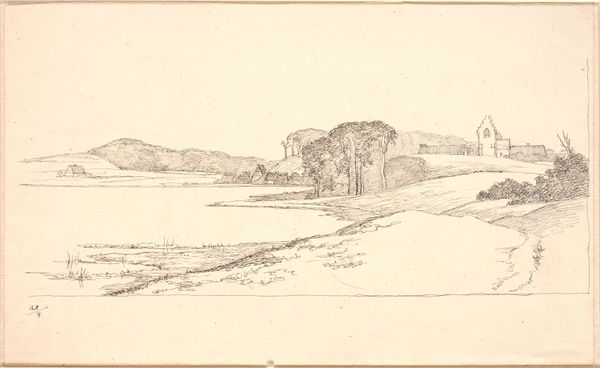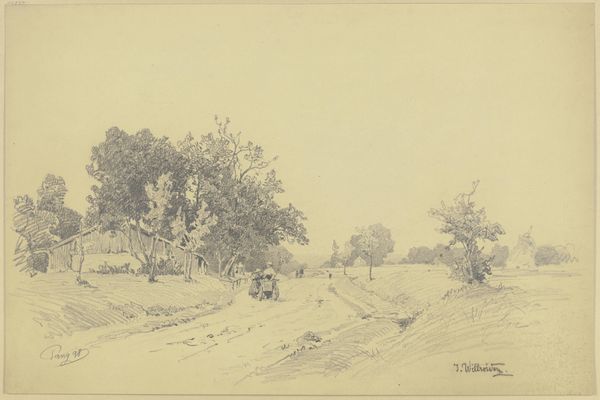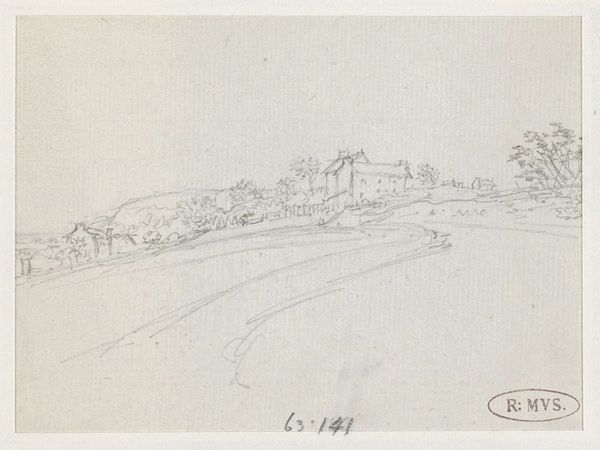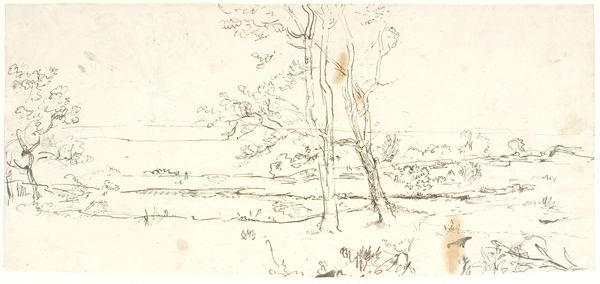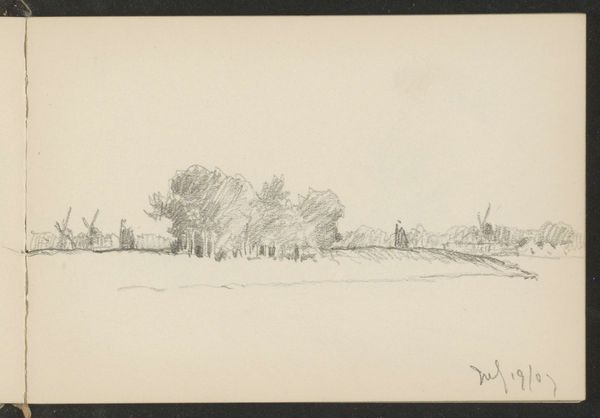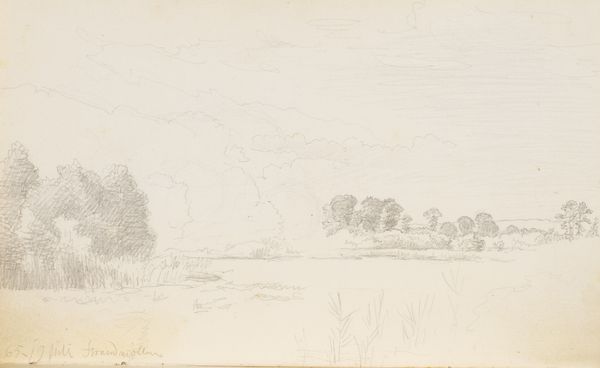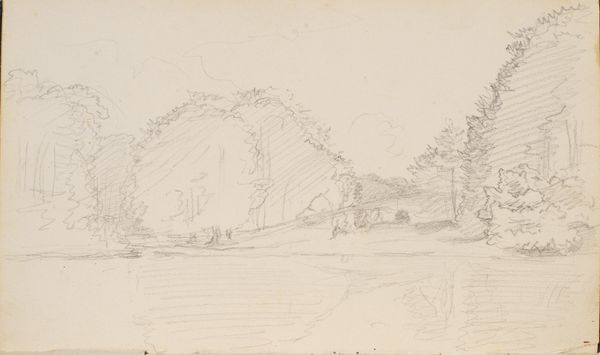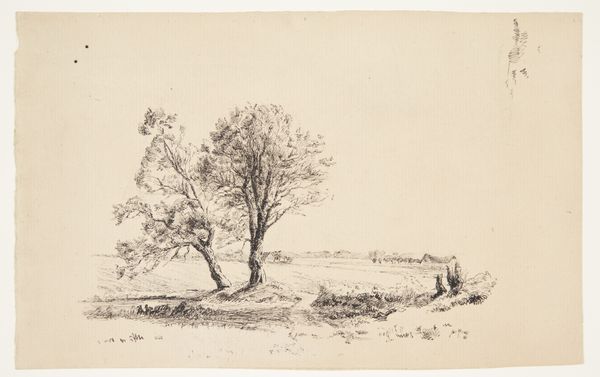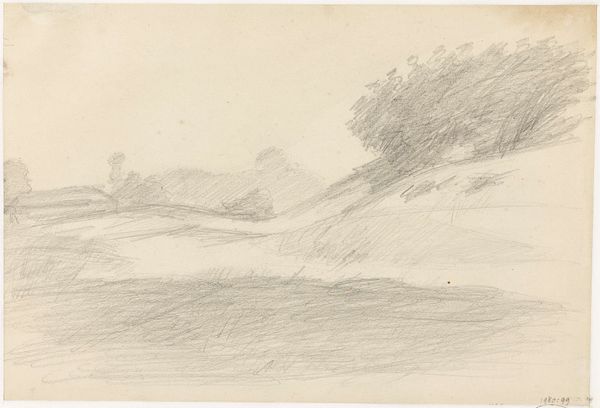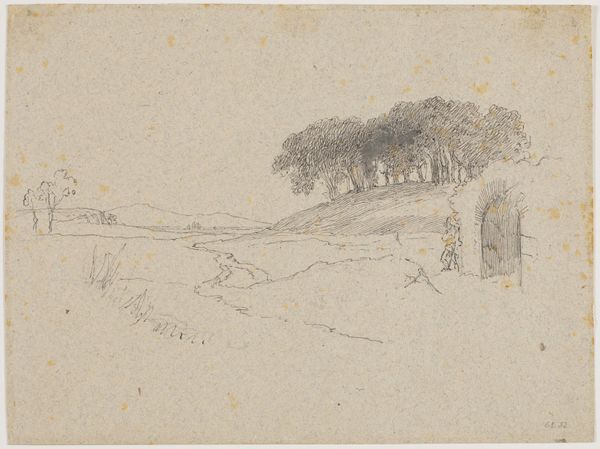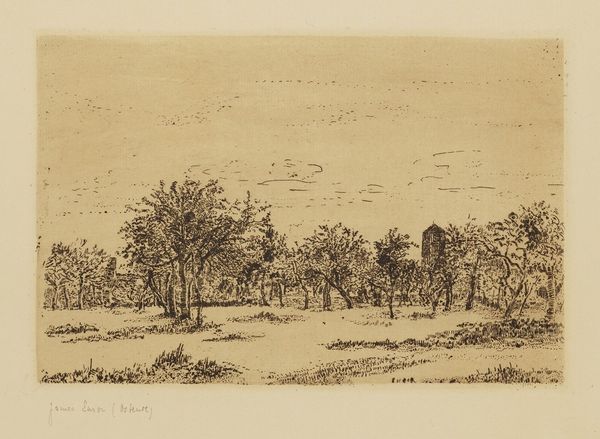
drawing, pencil
#
drawing
#
pencil sketch
#
landscape
#
figuration
#
romanticism
#
pencil
#
realism
Dimensions: Sheet: 4 1/2 × 7 1/4 in. (11.4 × 18.4 cm)
Copyright: Public Domain
Editor: So, we’re looking at George Richmond's "Landscape at Margate," created sometime between 1840 and 1860. It's a pencil drawing, and it feels so… fleeting. Almost like a captured moment. What strikes you about it? Curator: I’m drawn to the immediate materiality. The stark contrast of pencil on paper reveals an artist grappling with representing not just the view, but the experience of *making*. Notice the pressure he exerted on the pencil; this speaks volumes about the artist's labor. Editor: The labor? I hadn’t considered that. Curator: Exactly. A seemingly simple sketch reveals so much. Consider the Victorian social context. Richmond, known for his portraits, here engages with landscape. Why? Perhaps a turn toward observing, really observing, the changing landscape and how it reflects broader changes, for instance the beginning of leisure culture through trips to the seaside facilitated by an emerging industrial infrastructure. The raw pencil, devoid of painterly illusion, speaks to the reality of that transformation. Editor: So, it's not just a pretty landscape, it's commenting on society? Curator: Precisely. The landscape became a product itself, consumed and commodified through leisure travel. And here, Richmond’s pencil embodies that production, stripping away any romantic notions through its stark depiction. The lines etched onto paper *are* the means of consumption, a raw record. Consider what paper itself represented; its production relied on labor and resources, turning natural forms into something usable and saleable. The act of drawing becomes linked to consumption. Editor: I see. I was focused on the aesthetics, but you're bringing out this whole other layer about materials, labour, and how even landscape art is connected to broader social systems. Curator: Exactly. We must look at what comprises art, in a material and cultural way. It all intertwines. Editor: This has changed my perception. I see the sketch not as a simple depiction, but a tangible link to the era's social fabric. Thanks.
Comments
No comments
Be the first to comment and join the conversation on the ultimate creative platform.
